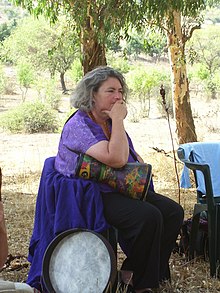
Modern paganism and New Age are eclectic new religious movements with similar decentralised structures but differences in their views of history, nature, and goals of the practitioner. Modern pagan movements, which often have roots in 18th- and 19th-century cultural movements, seek to revive or be influenced by historical pagan beliefs. New Age teachings emerged in the second half of the 20th century and are characterised by millenarian ideas about spiritual advancement. Since the counterculture of the 1960s, there has been interaction, mutual influence, and often confusion in the popular mind between the movements.
Among their commonalities, modern pagan and New Age movements have similar relationships between academic study and practice, take interest in aspects of European culture and history that were marginalised before the 20th century, and often incorporate older scholarship in their teachings. Although both movements are diverse and without central dogma, scholars have described major differences in their general tendencies. Whereas modern pagans commonly attribute wisdom to past cultures, New Agers believe in the coming of an improved human consciousness. Modern pagan theology is typically immanent and connects the natural world to the divine, whereas New Age proponents favour transcendence of the physical existence. Modern pagan practices tend to be ceremonial and focus on community, whereas New Age practices are concerned primarily with the personal growth of the individual.
Some hybrids between modern paganism and New Age have emerged, especially in the United States where they tend to overlap and be connected to the same social change movements. The presence of the modern pagan movement Wicca in popular culture since the 1990s has contributed to the creation of individualistic and commercialised hybrid forms focused on witchcraft. Differing views of the natural world and spirituality sometimes create friction between the movements. Modern pagans often seek to distance themselves from New Age identity and sometimes use the term "New Age" as an insult. New Agers commonly criticise modern pagans for their emphasis on material concerns. In the 1990s, several scholars studying New Age movements placed modern paganism under the umbrella of New Age, a classification which has been contested by scholars of modern paganism.